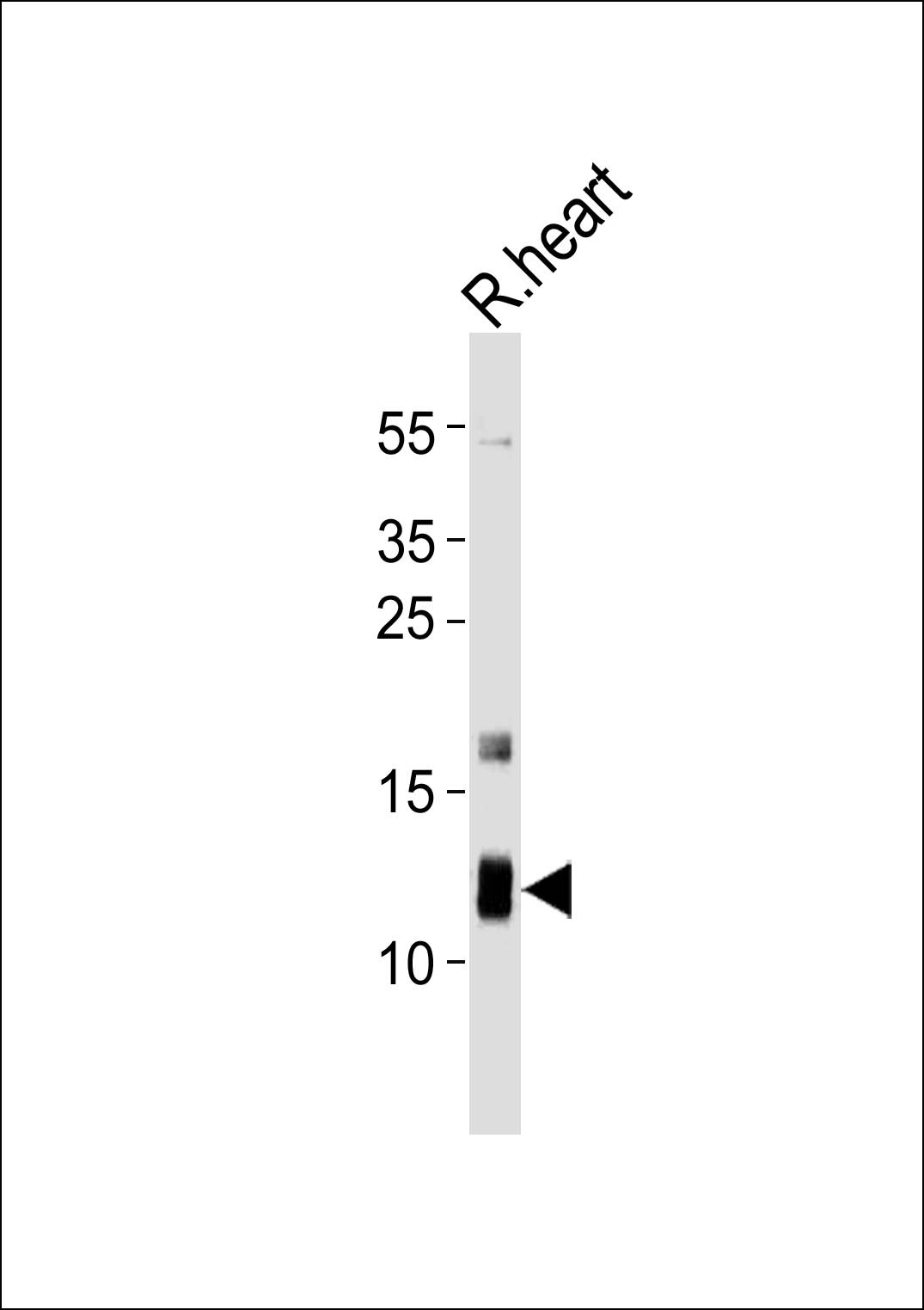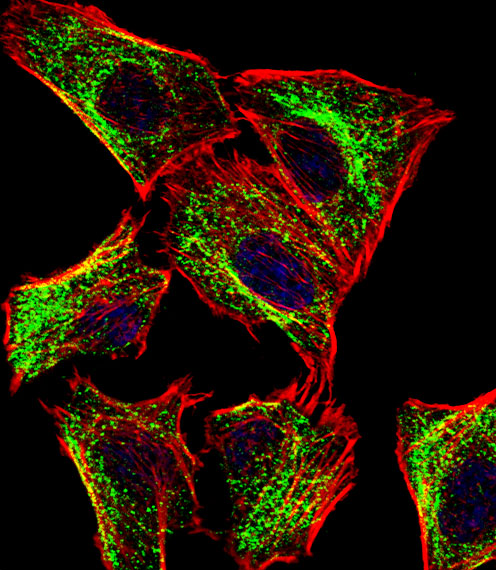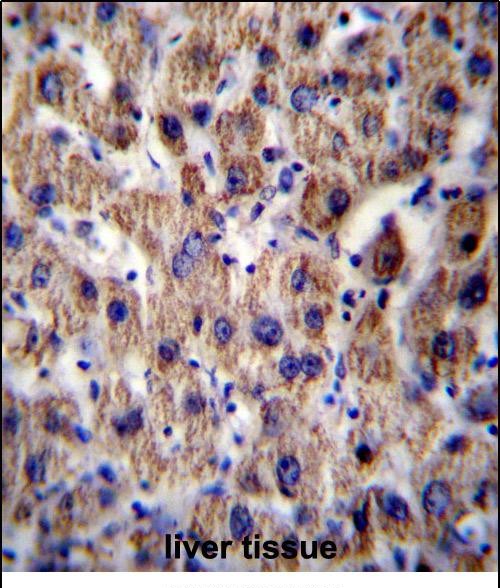产品名称
ATP5J Rabbit Polyclonal Antibody (Center)
别名
ATP synthase-coupling factor 6, mitochondrial, ATPase subunit F6, ATP5J, ATP5A, ATPM
存储缓冲液
Purified polyclonal antibody supplied in PBS with 0.09% (W/V) New type preservative N. This antibody is purified through a protein A column, followed by peptide affinity purification.
Human Gene ID
NP_001003696.1;NP_001003697.1;NP_001003701.1;NP_001003703.1;NP_001676.2
Human Swissprot No.
P18859
特异性
This ATP5J antibody is generated from rabbits immunized with a KLH conjugated synthetic peptide between 28-56 amino acids from the Central region of human ATP5J.
稀释度
WB~~1:1000;IF~~1:10~50;IHC-P~~1:100~500
运输及保存条件
Maintain refrigerated at 2-8°C for up to 2 weeks. For long term storage store at -20°C in small aliquots to prevent freeze-thaw cycles.
背景介绍
Mitochondrial ATP synthase catalyzes ATP synthesis,
utilizing an electrochemical gradient of protons across the inner
membrane during oxidative phosphorylation. It is composed of two
linked multi-subunit complexes: the soluble catalytic core, F1, and
the membrane-spanning component, Fo, which comprises the proton
channel. The F1 complex consists of 5 different subunits (alpha,
beta, gamma, delta, and epsilon) assembled in a ratio of 3 alpha, 3
beta, and a single representative of the other 3. The Fo seems to
have nine subunits (a, b, c, d, e, f, g, F6 and 8). This gene
encodes the F6 subunit of the Fo complex, required for F1 and Fo
interactions. Alternatively spliced transcript variants encoding
different isoforms have been identified for this gene. A pseudogene
exists on chromosome Yp11.
细胞定位
Mitochondrion. Mitochondrion inner membrane.
功能
Mitochondrial membrane ATP synthase (F(1)F(0) ATP synthase or Complex V) produces ATP from ADP in the presence of a proton gradient across the membrane which is generated by electron transport complexes of the respiratory chain. F-type ATPases consist of two structural domains, F(1) - containing the extramembraneous catalytic core and F(0) - containing the membrane proton channel, linked together by a central stalk and a peripheral stalk. During catalysis, ATP synthesis in the catalytic domain of F(1) is coupled via a rotary mechanism of the central stalk subunits to proton translocation. Part of the complex F(0) domain and the peripheric stalk, which acts as a stator to hold the catalytic alpha(3)beta(3) subcomplex and subunit a/ATP6 static relative to the rotary elements. Also involved in the restoration of oligomycin-sensitive ATPase activity to depleted F1-F0 complexes.




